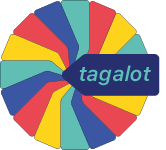What is the difference between the types of group in Tagalot Contacts, namely organisation, collection and service?
Group entries are records holding details according to the type and context of the group, and which logically group other types of record held in Tagalot Contacts. See the “Introduction to persons tags and groups” on the Guides page here.
Organisation groups and members
In the case of organisation groups, these can have associated person and address records and none, one or many of each.
The link between a person and a ‘parent’ organisation is actually another record which can hold details of that person at the organisation; this record is known as a ‘tag‘ (hence the name of the app ‘Tagalot’).
A tag can be associated just to the organisation, or to an address within the organisation; this association is important if mailing labels are to be produced, as in the former case, just the ‘default’ address will get printed for the tag, and in the latter, the associated address details.
Service groups, collection groups, and members
Collection and service groups are able to have three types of member, namely a person record, an organisation record, and a tag (person-organisation) record.
Service group records and associated service tag records are typically used to define access to social media web services and apps; the service tag record holds, for example, web and app ‘links’ to access pages for, say, a Facebook page for a person or organisation.
Collection group records simply group their members and have basic details such as the name of the collection. Collection group tag records just provide the link to the group and have no details to maintain, hence no edit view.
How the groups may be used
Organisation groups are typically actual, physical groups or legal entities, such as a company, partnership, social club, sports club, etc. The term ‘organisation’ also includes family and friends’ groups.
At their simplest, organisation groups can be used as reference entries, e.g., only an organisation name and a web link, or a record to store a password in the notes field – but make sure your iPhone or iPad is pin-protected!
As they hold people and place records, organisation groups could also be used, as an example, to record a holiday tour, with each location, photo, GPS coordinates held in address entries and persons met at each location tagged to the address. Persons on the tour could be tagged at the organisation level.
Tagalot collections are typically logical groupings, such as business prospects, or lists for sending Christmas or other seasonal cards, or to group all close family relations, etc, etc. As described above, the ability of Tagalot collections to group persons, organisations, or tags (person-at-organisation), or any mix of these, is an important and very useful feature of collection groups.
Such as:
-
Family – collections for close, distant, geographically, etc, etc
-
Emergency services
-
Team members – business, sports, social, etc
-
Apple contacts – collection of contacts you are happy to keep in your ‘frontline’/public Apple Contacts app
-
Customers
-
Prospects
-
etc
Service groups are for user-defined groups of contacts, by type of service. Basically they provide the means to link to a contact’s specific entry in that social media site or service. This depends on the service provider making details of access ‘schemas’ available. (Defining a service link will the subject of a future ‘How to’ guide).Click to edit FAQ text. Here is your opportunity to tell customers what they need to know about your products and services, and how your company operates. Do you ship products? Is there parking available for visitors? Do you do any custom orders? The more information you give customers up front, the more prepared they are to make a purchase when they come in or call.Click to edit text. Focus on how you can benefit your customers.
When I open the address list for an organisation, then swipe an address row, I am not seeing the persons tagged to the address?
A person contact is tagged to an organisation by a drag and drop action onto the listed organisation row. This creates a tag record and associates the person to the organisation, but not to any existing address record for the organsiation. To tag a person to a specific address, first open the address list for the organisation and then drop the person contact onto the address row.
To move existing tags to a specific address first select the organisation members with a swipe left to right on the organisation row. All tags for the organisation will appear in the tags list. Next, open the address list from the organisation row – tap on the (i) button. Then simply drag and drop the tag onto the required address row.
To view tags for a specific address only, swipe left to right on the address row.
Always check the heading on a tags list, which will confirm which tags are being listed.
These are the possibilities when viewing tags from an organisation list or an organisation’s address list:-
1) Organisation list – organisation selected (swiped L to R) – ALL tags for the organisation
2) Address list – Address row selected – Tags for the address only
3) Address list – Organisation (top) row selected – Tags not tagged to an address, i.e. tagged to the organisation ‘level’
4) Address list – Deselect ( swipe L to R) a selected row – ALL tags for the organisation.
No answer for you in our FAQs?
Please contact us and we will endeavour to respond within 24 hours on our working days.
